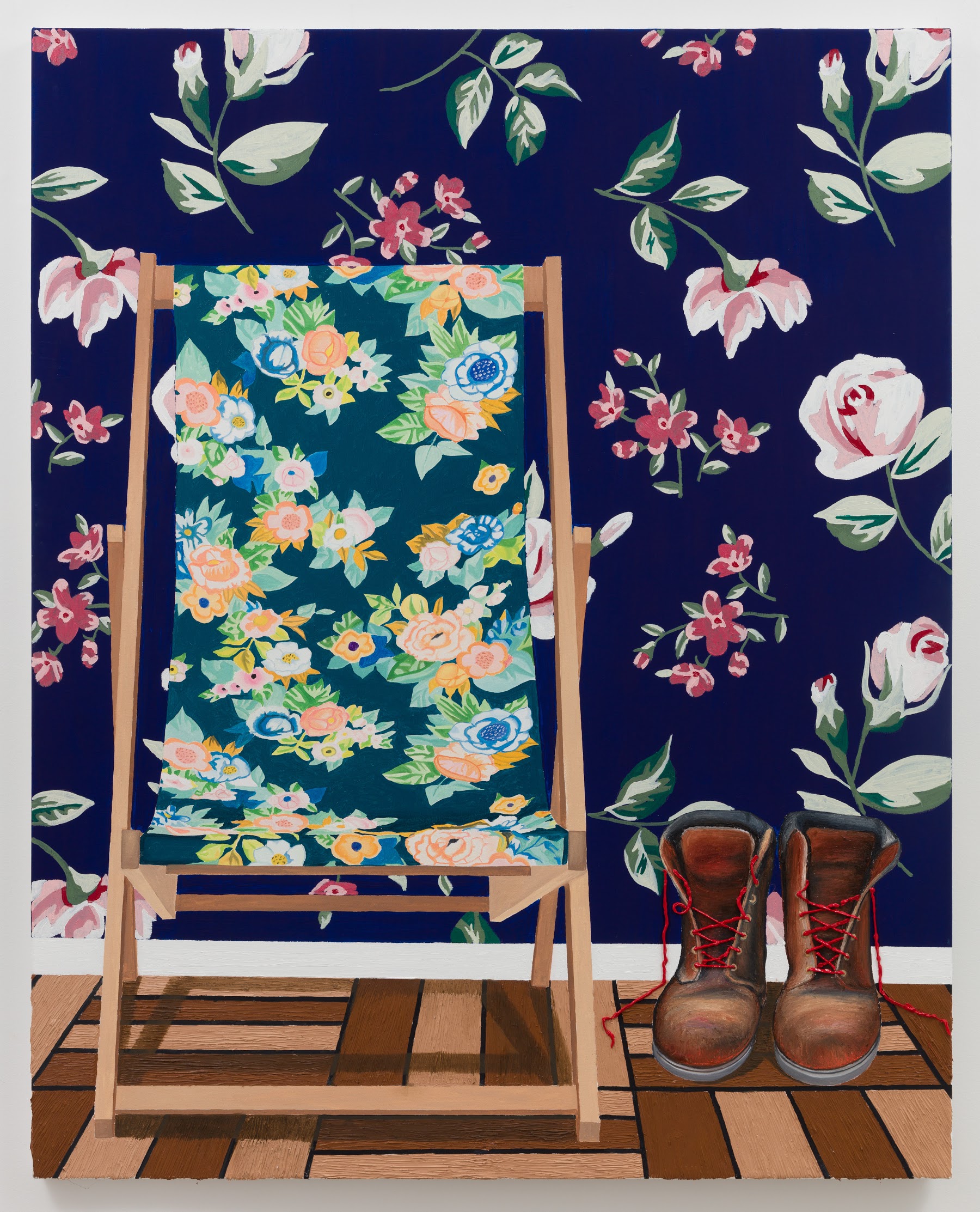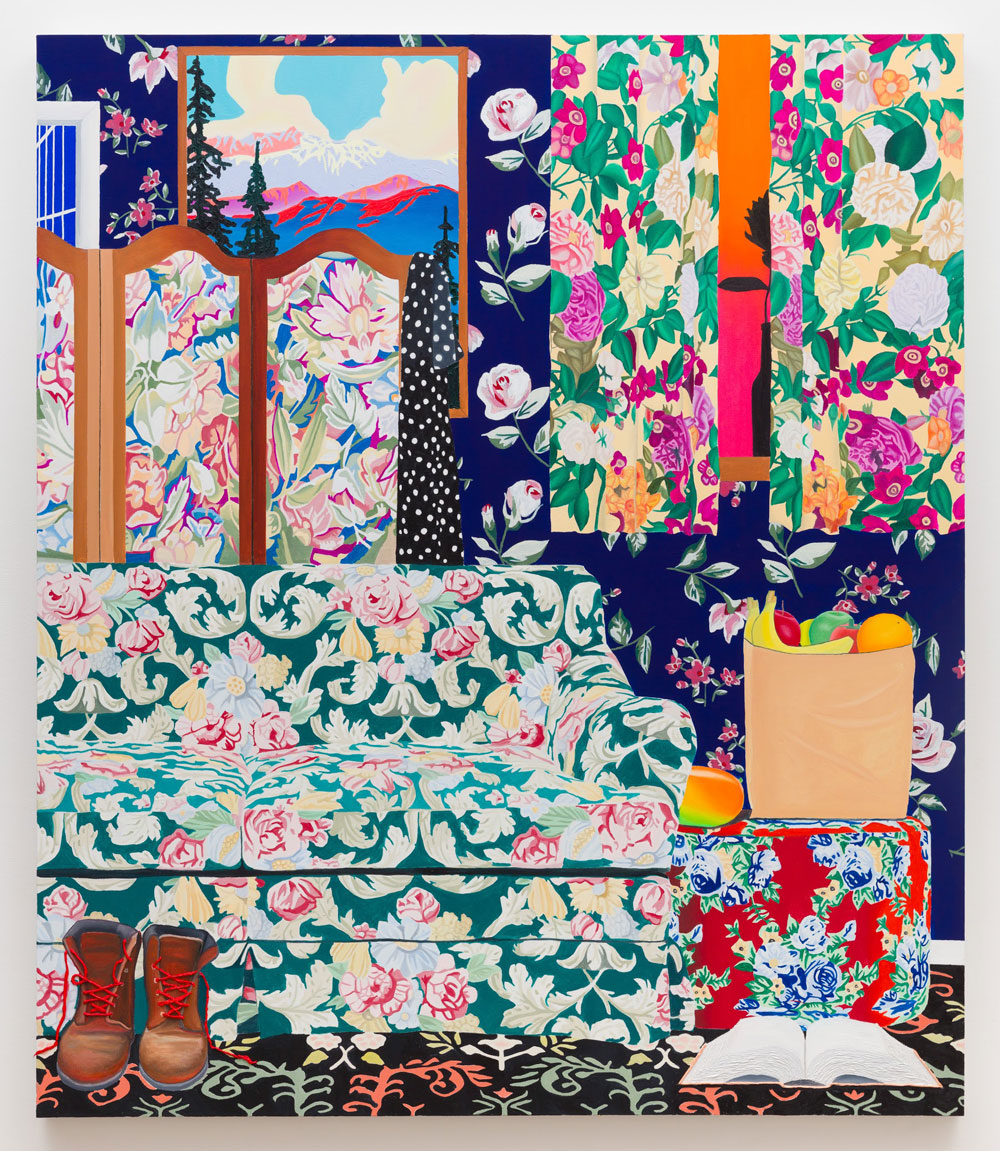Since 2017, Alec Egan has created paintings that depict the interior rooms of imagined dwellings. These spaces are often decorated with competing floral patterns so ornate they become claustrophobic. In August, he presents 14 paintings of varying sizes that center around a large key or index image entitled Changing Room (all works 2020). The August of the exhibition title references the hottest summer month and some of the paintings do offer relief from seasonal doldrums through the depiction of silhouetted palm trees, ocean views with cascading waves, and mountain landscapes. While these images show exteriors, they actually appear within Egan’s interiors.
In Changing Room, Egan realistically renders the rooms furnishings—curtains, couch, rug, folding screen, ottoman and wallpaper—each covered with a different Victorian or Laura Ashley pattern. This confluence of vibrantly colored and clashing flowers is augmented by other elements—an open book, work boots, a bag of groceries, as well as wall-mounted pictures. The dense composition projects a comfort with clutter. The information within Changing Room functions as the conceptual centerpiece for Egan’s explorations of both domestic and natural spaces. These interiors are both compelling and off-putting places.

Alec Egan, Chair with Boots, 2020. Courtesy Anat Ebgi Gallery.
While Changing Room appears to contain or reference the other paintings in the exhibition, Egan toys with the obvious. Rather than create a one-to-one correspondence between Changing Room and the other works, Egan slyly brings in other references. The red laced boots in both Chair with Boots and Changing Room pay homage to Vincent van Gogh. Similarly, Palms at Deep Sunset, a thickly painted rendering of two palm trees silhouetted against an orange/pink gradient references the work of Ed Ruscha.
Wallpaper with pink roses set against a deep blue background appears in many of the images including Bag of Fruit on Ottoman, Chair with Boots, Flower in Tea Pot, Oven Mitt, Mango and Bottle, and Flower in Bottle. In these paintings, Egan indulges in and plays with doubling and fragmentation, reproducing various elements from Changing Room at different scales and relationships.
Egan’s painted world is lush and luscious, offering hope and a way to indulge in fabricated beauty. He is without a doubt a skilled draftsman who easily combines a range of styles by experimenting with thick and thin applications of paint as well as sparse to overcrowded compositions. The works in August construct a narrative that parallels the inside/outside dichotomy in today’s pandemic stricken world: the desire to be out when in and the need to imagine open vistas when confined within a domestic dwelling. Perhaps it is a case of “the grass is greener on the other side:” within these imagined spaces, Egan expands the boundaries of traditional still life and landscape painting. Nevertheless, he still draws from the past as a way to perhaps understand and live in the present.


